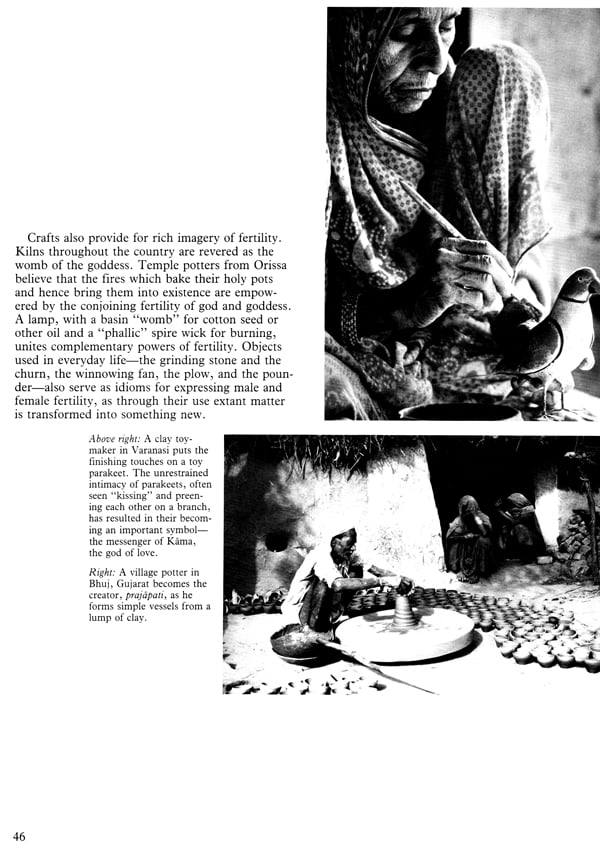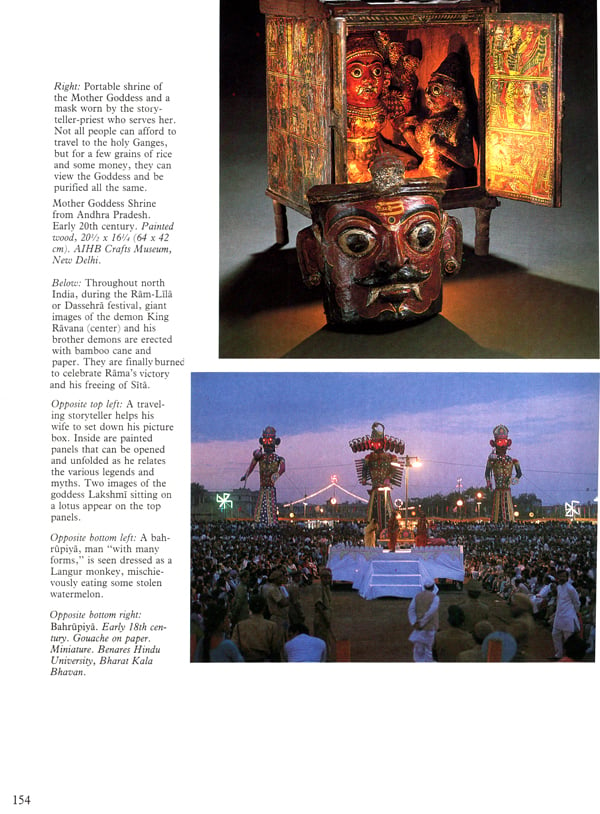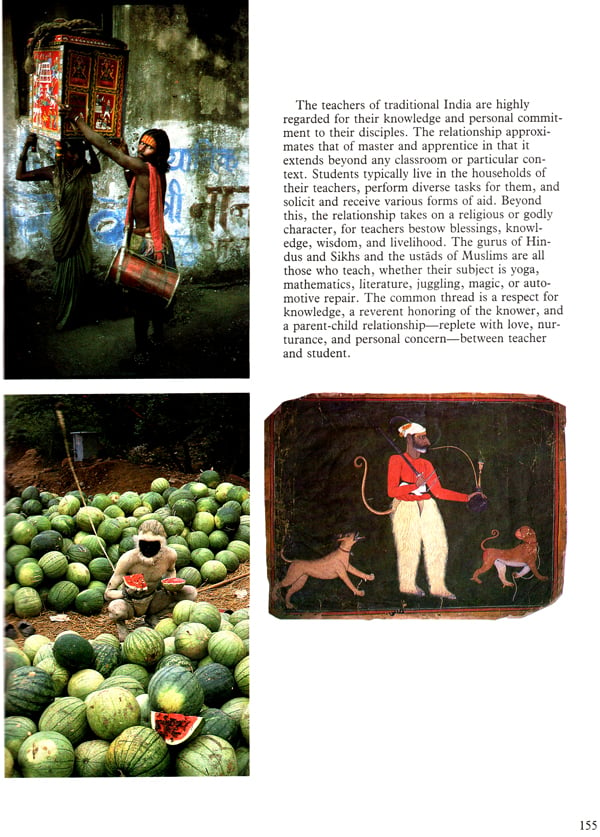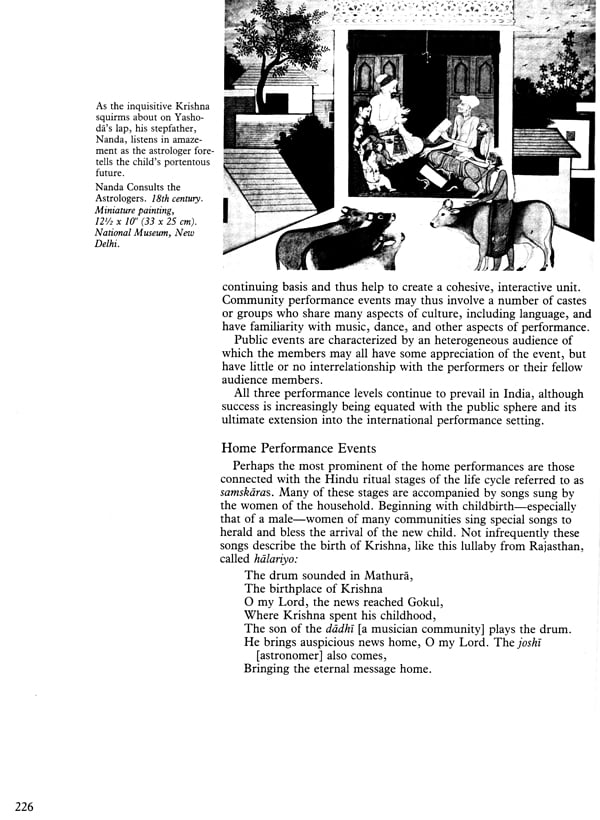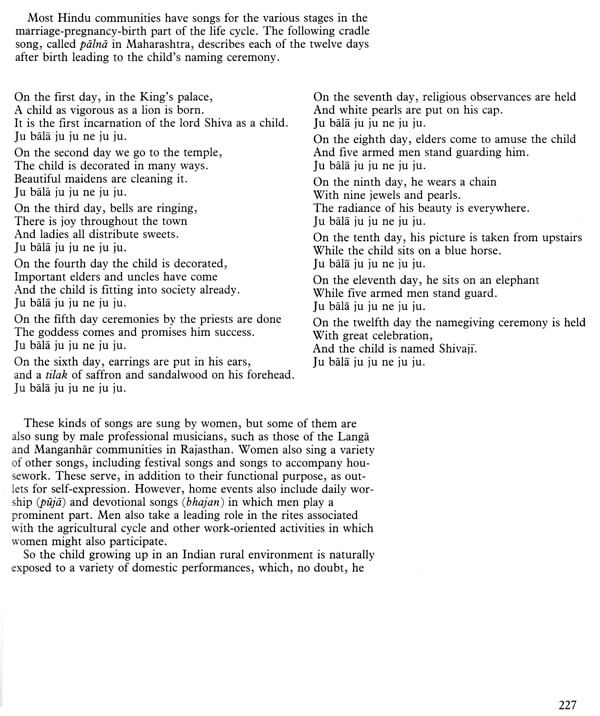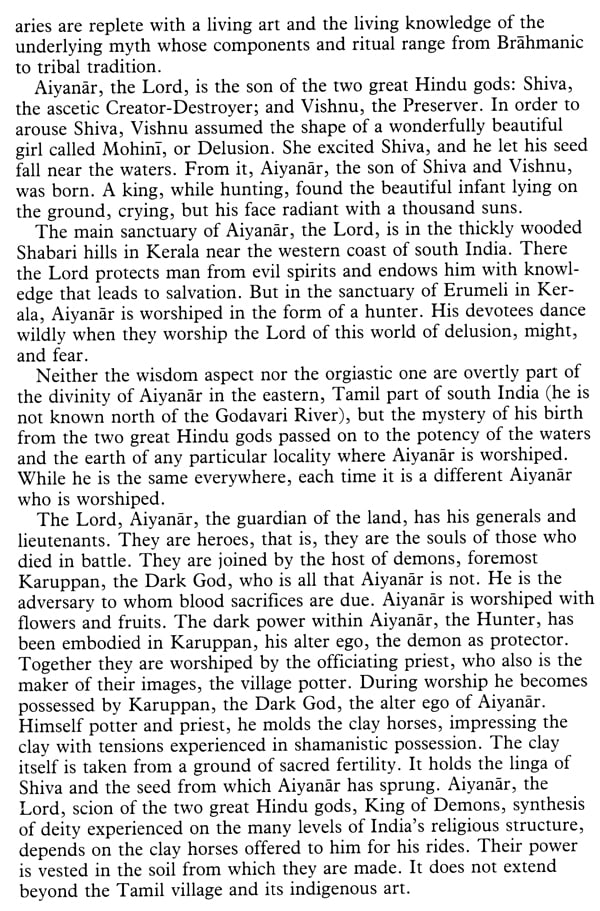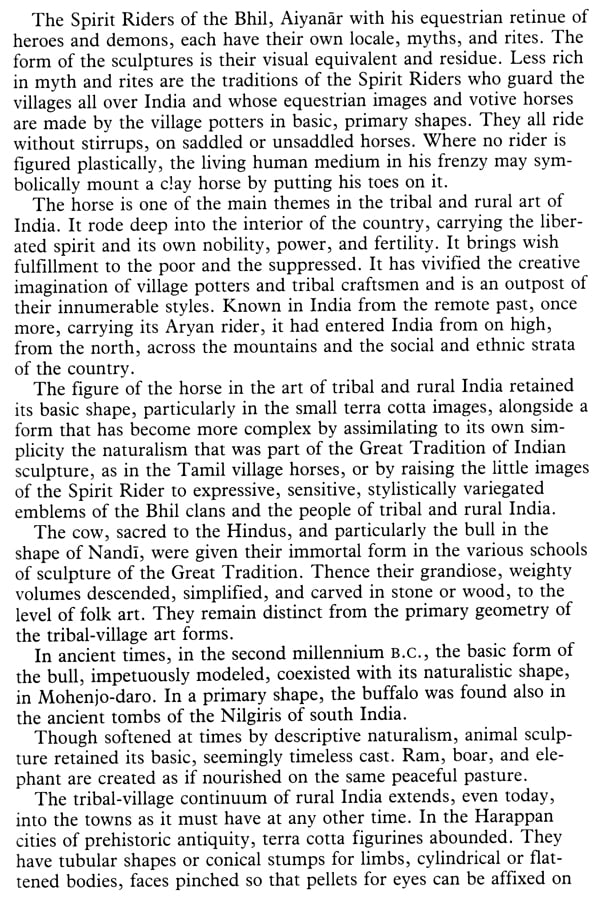
Aditi: The Living Arts of India
Book Specification
| Item Code: | NAU705 |
| Publisher: | Motilal Banarsidass Publishers Pvt. Ltd |
| Language: | English |
| ISBN: | 0874748534 |
| Pages: | 280 |
| Cover: | PAPERBACK |
| Other Details | 11.00 X 8.50 inch |
| Weight | 1.05 kg |
Book Description
When Aditi was first conceived seven years ago, we were deter-mined to change the prevailing pursuit of culture as a leisure-time activity. Nor did we find the customary presentation of Indian art as it relates to the study of schools, styles, and chronology a particularly illuminating exercise.
As Aditi created itself, the canvas for it stretched on its own. The chosen theme of the rites of passage (samskara) unfolds the pattern of this culture we call Indian. It is an integral pattern. Making, being, and expressing are the same things, so that the reason, or the specific occasion is an event on which its own artifacts, related functional skills, supportive traditions, or rituals converge. Conventional boundaries between theater, craft, music, dance, drama, poetry appear to dis-appear. Supportive relationships are emphasized.
The theme of Aditi is simple: It is joy in life that is best expressed through the desire for new life, life expressing itself as an expansion of a seed into the ongoing spiral of experience. Aditi traces the cycle of time itself from the abundant desire for life (and that which precedes desire) to the point when life again furthers life, spinning off into yet another cycle.<<P>
The cycle contracts itself into the child's world. No individual or community so wholly reveals its nature and its essential values as in its relation to its children. For the child is the repository of our collective experiences, our hopes, and the imbalances between them—what we conceive the ideal man or ideal woman to be. A child then is both child and adult, in capsule.
Aditi presents what it has to say by drawing on a cluster of fundamentally Indian metaphors. The Indian aphorism, "Yat pinde tatso brahmande"—`In microcosm lies the macrocosm'—is manifested in the fact that a potter is also called prajapati, the progenitor. His equipment and action are symbolic of the cosmic forces of creation. The potter's wheel is Vishnu's chakra, the wheel of eternal law, according to which everything proceeds into manifestation and is again withdrawn from it; the stick for turning the wheel is Indra'a vajra, thunderbolt; the flat cone of clay is Shiva's linga or phallic form, and the water container is the kunda of Brahma, a symbol of the mendicant ascetic. This consciousness is invoked in a dedication to the potter's wheel, chak puja, that is required to solemnize weddings in northern India. The pot is also a form of the goddess in many parts of India, as of the human body in Kabir's poetry. It comes into its own when finally cut from the spinning mound of clay with a piece of string—the ritual thread of initiation—janayupavit. While reflecting a strong local and regional flavor, Aditi highlights the presence of a collective vitality that has its own built-in symmetries. The subsistence of this vitality is rich in myth, symbol, and song—in ritual and reticences that are older than thinking. The bird, harbinger of spring, invokes fertility. The parrot—vahana, vehicle of Kamdeva, the God of Love—and the fish—the banner of his consort, Manmatha—appear in the memory of a crafts-person as symbols appropriate to a marriage. The jadao pendant, pre-pared for the bridal trousseau (discreetly enamelled on the reverse side to prevent the gold from wearing off against the skin) signals the same belief with parrots engraved intricately on a tree of life.
This courtly interpretation of the craftsmen's blessings has an echo in the classical traditions more than a thousand miles away in the south, where killi malai, a garland of parrots, is symbolized by a parrot on a pin placed on the shoulder of the goddess Minakshi. When viewed in its entirety, India is bewilderingly diverse. But these varied traditions merge or influence each other, the rural and tribal vernacular traditions interacting with the unbroken classical traditions. The traditions of microcommunities of itinerant artisans, who have been forced to move with the imperative of employment, com-bine with the tales and songs of the traveling bards and performers to help unify this varied whole. Like the potter at his wheel, we have tried to place the object and the skill (through demonstration wherever possible) in its context (the marriage). We then go further to suggest the link between the object and the maker and its contemporary usage. The rituals that Aditi documents illustrate how early and contemporary man attempts to control and understand a mysterious environment and render it tangible through symbols, images, and sounds. These rituals reinforce interpersonal, family, and community relation-ships and customs.
Aditi is a riddle. Like the Sun, she is also fire as energy. Awakened, she is the first dancer. As the active transforming principle she becomes operative through nature's immutable laws, the flux of time, and the ceaseless flow of seasons. Playfully she weaves a circular path, turning around, by the very movement creating cyclic time, ensuring passage. As the prime mover, Aditi, the central node of energy, is also the crucible for the senses undifferentiated. Activated, they manifest as sound, touch, sight, taste, and fragrance, in turn invoking space, air, fire, water, and earth.
Certain imperatives determine Aditi's manifestations and directions. In her ascending tendency Aditi follows the northern journey of the sun into the constellation of Makara, the crocodile, a period of longer days and shorter nights, a time for sowing and harvesting, for abundance and fertility—creating art that expresses itself through energy contained in symbols of the auspicious, drawn on floor and wall, through brilliant sun-dyed colors of garments, through song, dance, mime, and riddle.
In the descending tendency she enters the southern journey of the sun, into the constellation of Karka, the crab. This is a period of longer nights and shorter days, when the gods sleep, the earth lies fallow, and all auspicious rites and ceremonies end. It is a time for the propitiation of the malevolent forces of nature, sorcery, and disease, for assuaging the cry for protection that echoes from a time without beginning through the recitation of spells, the drawing of magical geo-metric abstractions on floor and wall, and through ritual gestures and rites of protection.
From the soaring snow peaks of the Himalayas and their flower-swept valleys in the north, to the rain forests on the southernmost shores of an ocean-cradled India, from the pronged Ganges delta in the east to the deserts of the west, a cultural commonality unifies the land mass, transcending changing landscape and climate and ethnographic variation.
An ancient cultural geography familiar from the Purana texts reveals a unifying vision that reaches out to the cardinal directions to establish the sacred ground of pilgrimage and the sites of fairs and festivals at the confluence of rivers, on mountain peaks, on sea shores, and in the midst of dense forests, thus creating an ethos of the path-ways, of moving feet of pilgrim and traveler. With this there exists an oral tradition of singing and traveling; the mendicant, katha vachak, the story teller, and picture showman, the bard, the juggler, the acrobat and the bahrapiya, the actor who mimes the roles of goddess and hero.
This landscape of movement and an oral literature ensure within a traditional framework continuous transformation—a process of learning, absorbing, creating, and teaching that establishes the cultural unity, the ground of India. From this flows the ocean of story, the landscape of the epics and Puranic legends; out of this are born image and icon, rites and rituals, fairs and festivals. Three vast religious, sociological, and cultural rivers met and mingled in the heartlands of India. The most archaic and the most pristine were the food gatherers, claiming to be the first-born of the earth, the original inhabitants of this land, claiming descent from Shiva, the first ancestor, with his links to earth and fertility, to death and life.
Tribes who dwelt in forest, mountain, and cave until fifty years ago practiced beawar, a shifting agriculture, refusing to wound the Earth Mother with the plow. These people perceived themselves as living in an intimate kinship with animals and trees, with stone and water, sustaining a living tradition that nurtured the belief through enactment of the ritual—through dance, song, or liturgic drawing. The energy thus awakened was not dissipated or dispersed, but rather ensured its own fulfillment.
**Contents and Sample Pages**

